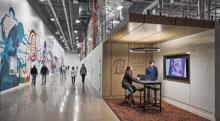
Healthcare Design Beyond the Hospital
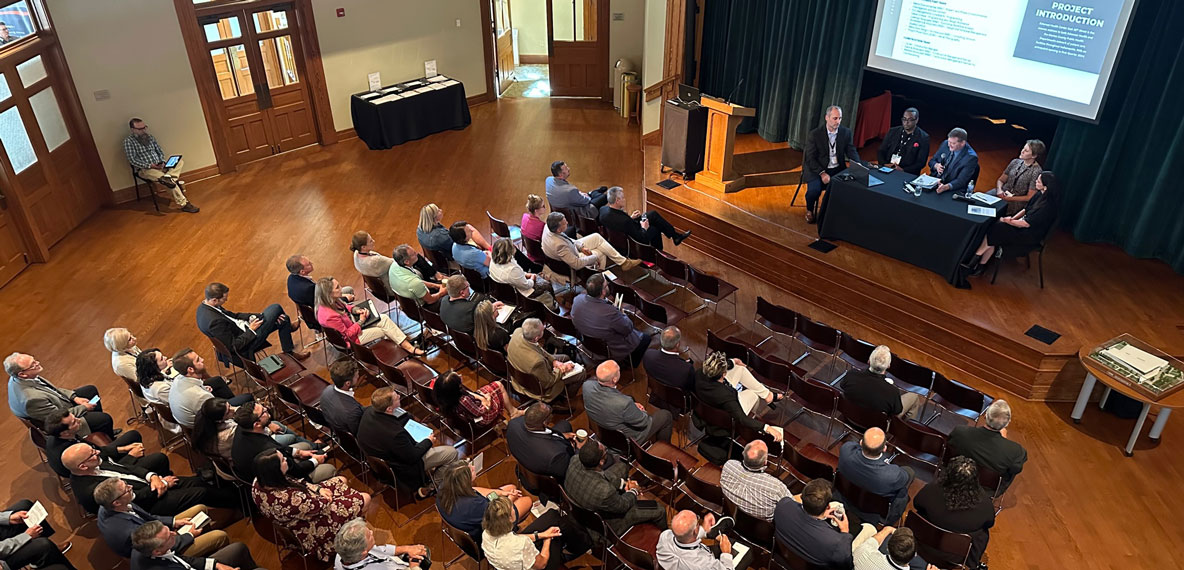
I recently had the opportunity to attend the AIA Indiana Healthcare Design Symposium in Indianapolis. The agenda included four one-hour sessions as well as an awards program, happy hour, and a few vendors. For me, the emerging theme from the symposium was using integrated design to support the holistic health of a person, from urban planning and urban design of a health district (macro level) to the architecture and interior design of the emergency department and exam rooms (micro level).
Some Highlights
The symposium kicked off with the future of emergency department (ED) design, where the speaker shared that clients always want as many ED rooms as possible. Increasing numbers might not be necessary, though, if health systems rethink their models of emergency care. One example included Care Initiation Areas (CIA) as a new way of triaging patients and getting patients the necessary care for quicker disposition from the ED. It was inspiring to see the use of data-driven analytics leading to predictive modeling to better understand the number of rooms that may be necessary short term vs. long term. By triaging and seeing people up front, figuratively and literally, you can lessen the numbers in the actual ED. Internally, I questioned the effect on patient experience, but it’s been shown to lessen time in the ED, which all patients appreciate.
Next, the project team behind IU Health’s new downtown Indianapolis hospital presented on health equity and the health district surrounding the soon-to-be hospital building. Driving their approach was how they framed the current public health crisis arising from climate change, the pandemic, and systemic racism. With this project and encompassing district, I was inspired by their drive to:
- Listen to and raise the voices of the most marginalized.
- Diversify our profession (architecture and design).
- End segregation by design.
- Lead the client into partnerships for health.
- Double down on designing healthy places.
The project team is thinking beyond just the hospital building and creating an entire district focused on health. For me, it was exciting to see the convergence of urban design with healthcare design, my oldest and newest areas of practice. The most jarring moment was the reminder of the role place plays as part of determinants of health. At the new downtown hospital site, life expectancy is 70 years old, while up north, at the Hamilton County line (96th St.), life expectancy stands at 90 years old; same corridor, just 10 miles apart, with a 20-year difference in life expectancy.
Nicely continuing the theme from the previous presentation was the project team of the Eskenazi Health Center at East 38th Street that is nearing completion. Much like the IU project, we heard about the holistic planning and extensive neighborhood engagement used to inform the design. As a Federally Qualified Healthcare Center (FQHC), this center fits into the neighborhood and can be very relevant to residents by providing a custom set of health and wrap-around services, the focus being on aspects that impact physical, mental, and emotional health. For the team, access was the driver, meaning they thought about access to the center (transit), access to care (no one is turned away), and access to food (grocery store on site). It was inspirational to hear the clinical health director state, “If I hadn’t been part of the whole process, I wouldn’t know what a difference design can make.”
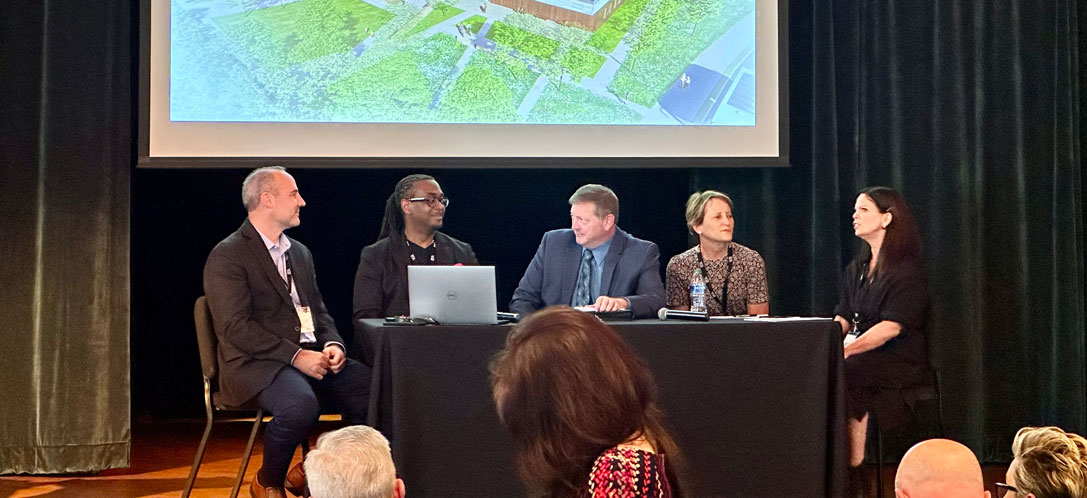
Panel discussions like this one, “How Holistic Planning and Neighborhood Engagement Shaped the Eskenazi East 38th Street,” emphasized the importance of partnering with communities.
Wrapping up the symposium was a moderated panel of speakers from the two project teams. The following comments resonated with my own approach to a broader sense of healthcare design:
- When partnering with communities, especially marginalized communities, we must make sure to “work with them” rather than “be done to them.” At BHDP, we would say, “co-create with the community.”
- To do so, we need to understand the full context, understand demographics, hire local, and engage the full community.
- Healthcare design within communities is not about just getting a building commission.
- As architects and designers, we must move beyond fees as the ultimate value proposition.
- “Health Equity = Access;” project leaders should think about and drive access to transportation, food, housing, services, etc.
- It doesn’t matter how beautiful a building is; if it doesn’t have the right people leading, managing, or running it, the outcomes will not be positive.
- “Design is a public health intervention.”
My Key Takeaway
As this world, and the projects we work on, get seemingly more complex, architects and designers need to embrace working with end users, engaging all voices, and looking beyond a project as simply a building (product) to a potential for transformation (outcomes). As one panelist quipped, “No one wants to go to the hospital,” but when they do, utilizing a design for people approach can make that visit a better experience for all involved.
Author
Content Type
Date
September 06, 2023
Market
Practice
Design Implementation
Topic
Healthcare Design
Innovation
Design Thinking

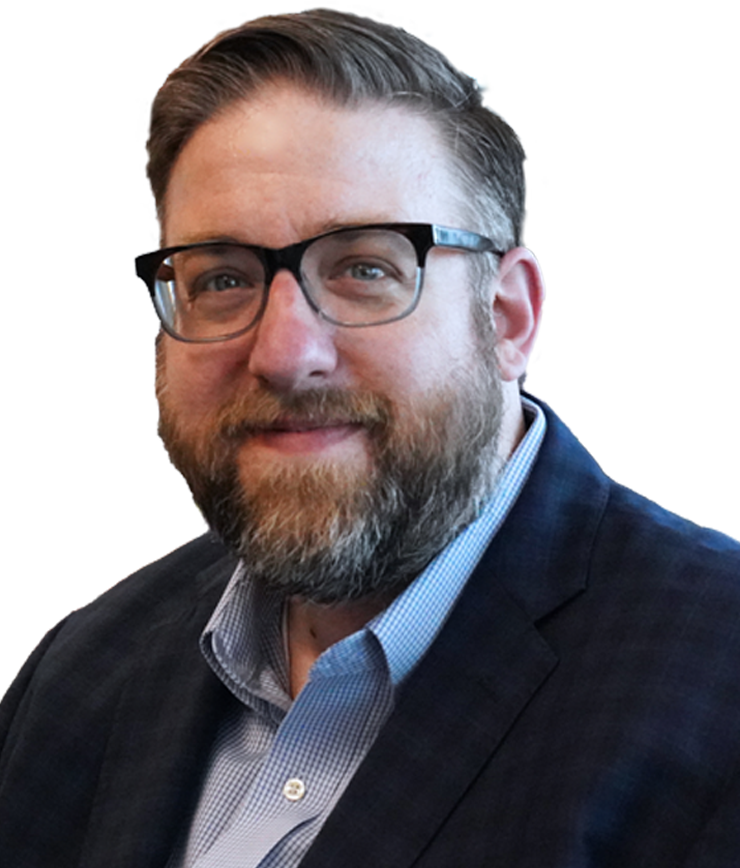

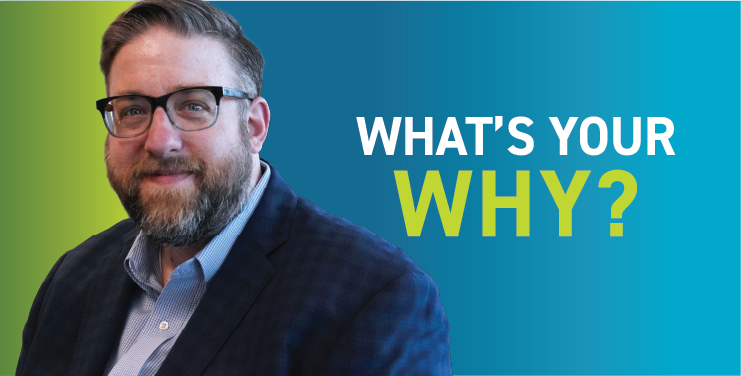
Anonymous 7 months ago
Justin, AIA Indiana is proud of the work that is taking place in our home community of Indianapolis. From the massive IU Health Project, transforming the Capitol Ave corridor to the work being competed as part of the Eskenazi Health Center at East 38th Street, projects and people are making the difference. AIA Indiana thanks you for attending the Symposium. We hope to be planning for year three of this program in the coming months. Always good to see your smile in Indy!